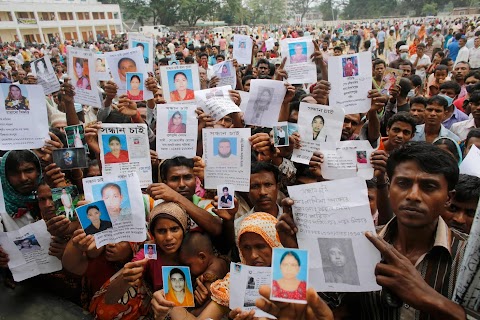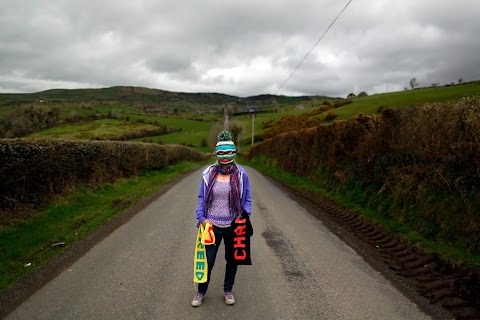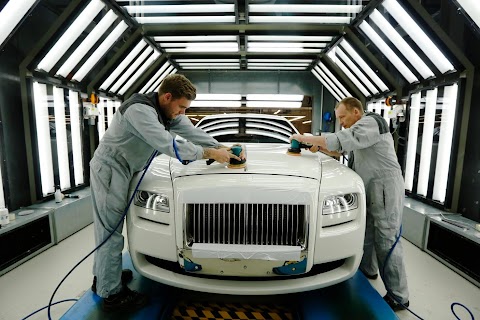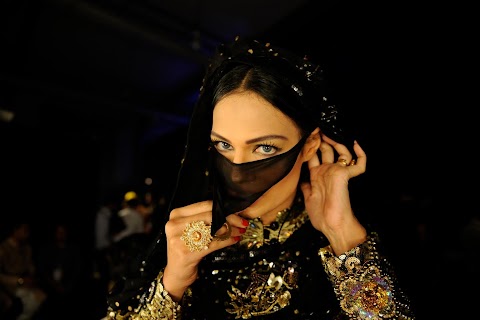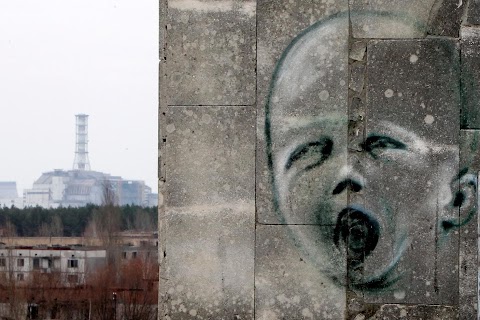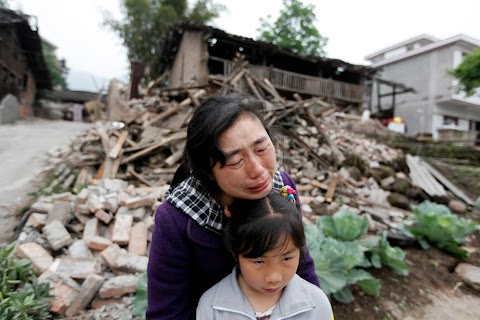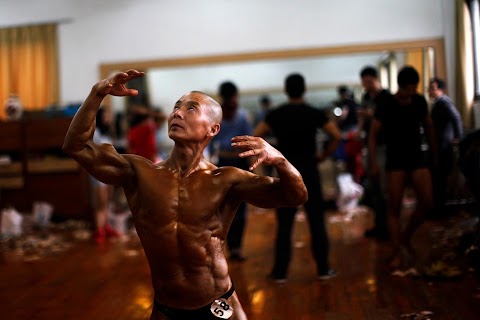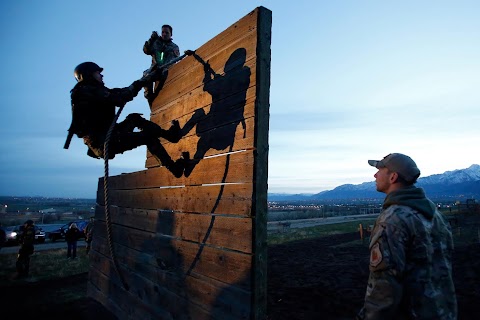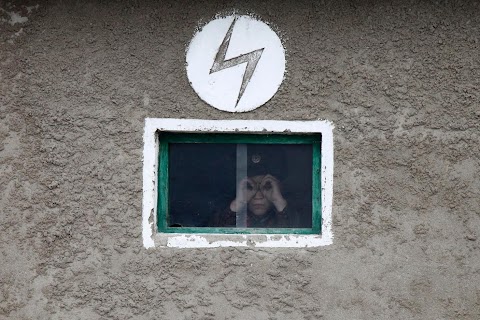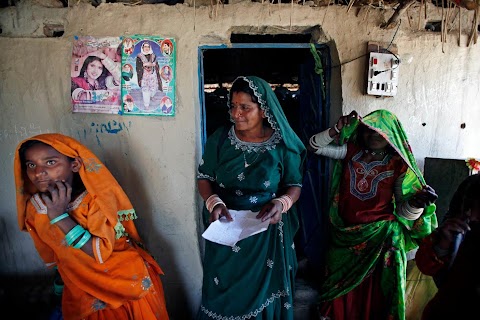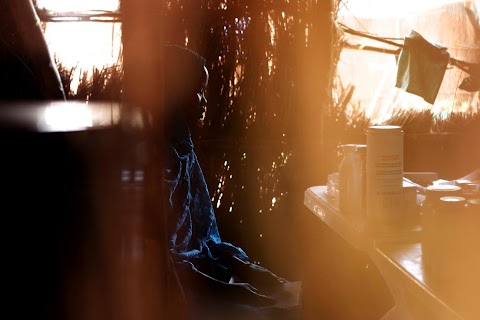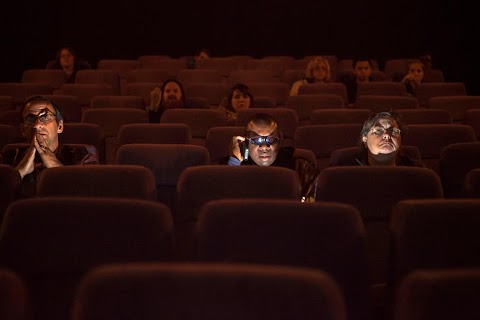
Seeing things differently
 Gaia Squarci
Gaia Squarci
Three people settle down to enjoy a film at a cinema in Arkansas. They are all about to watch the same movie, but what they will actually see is quite different: Robert Brown (left), is visually impaired as a result of Stargardt disease, Dale Layne (centre), is blind with light perception because of glaucoma, and Cynda Bellamy (right), has the use of her sight. She is a member of staff at World Services for the Blind - a rehabilitation centre for the visually disabled where the other two are students.

Dale Layne feels his way down a darkened hallway while heading to the gym at World Services for the Blind (WSB).
Layne came to study IT at WSB, which offers its students a range of different programs, from vocational professional courses to training in practical life skills.
The centre aims to help those who study there - including both the totally blind and those with other visual impairments - to live independently in the long term.
“As a sighted person, my first thought was: what would I feel about this place right now, sitting on this bed, if I couldn’t see?”
I’ll never forget the day I first came into contact with blindness. It was a day in November 2011 and a couple of months earlier I had come to New York to pursue photography, shaping an identity for myself largely based on what I could see and the way I could see it. Blindness was pure terror for a photographer like me – and it was also mysterious.
That day, I walked into Visions, a centre for the blind, and 10 minutes later I was sitting in an armchair with a weird hat on my head, posing for a picture in a photography class. I was totally confused but simultaneously my focus crystallised. I wanted to see — and photograph — what the sighted don’t imagine is still possible for the blind.
Dale Layne, 31, was one of the blind photographers in that class. Dale is from Guyana and is both talkative and composed. Since our first meeting, he’s become a friend and a point of reference when I try to explore perceptions of space, time, identity, culture, memory and love, as they are heavily affected by lack of vision.
Dale picked up the phone dozens of times to help me in this process and I was intrigued when one day he told me he would move to Little Rock, Arkansas to study IT at a school for the blind. I knew it would be a key experience for him.
Technology had always been a passion for Dale but I had never seen him satisfied with his employment situation. I recall seeing him disassembling a computer at home and fixing it in front of me, using the visual memory that he had from the time before glaucoma took his sight at age 19. Aware that sustainable employment is a crucial part of a person’s identity in any capitalistic society, I wanted to go see this school that trained people facing enormous obstacles in order to help them realise their ambitions.
After my first night in Little Rock, I woke up with a stunning dawn outside my window. The red of the horizon faded very quickly into the blue just above. As a sighted person, my first thought was: what would I feel about this place right now, sitting on this bed, if I couldn’t see?
That question stayed with me for most of the time I spent there. I became hyperaware of the smell of the cafeteria, the hiss of the computers, the change of temperature from one corridor to another. I imagined the space through the different forms of visual impairment I was getting to know.
The unemployment rate among visually disabled people in the United States is around 63 percent, according to the American Community Survey provided by Cornell University. Among those with jobs, underemployment is widespread.
Michael Faillace, who is blind and works as an employment lawyer for disadvantaged workers, perhaps says it best: “If you’re blind in this country almost everyone is nice to you, until they have to give you a job.”
To fight the status quo, the two main goals at World Services for the Blind (WSB), where Dale studied, are job preparation and personal autonomy. The two are unfailingly intertwined.
The school feels like its own world. Students come from everywhere in the United States, with diverse life experiences and different degrees of visual perception. There are sighted and visually impaired teachers and blind and visually impaired students. Everyone has a different level of sight. Vision, even with limitations, is a privilege and it is an occasion to help others who don’t have any sight at all.
According to the school, employment rises to 70 percent among students within a year of the completion of their programs, and it often comes as the result of an essential psychological journey.
“Those who get here are already half way. Sometimes when you lose your sight you’re too insecure to start again, to not even talk about facing a job interview. If you don’t try you won’t make it, and it takes time to get there,” student Miguel Mendez told me.
Others confirmed that the experience of living on their own – learning to iron, cook, do the laundry, pack a suitcase or travel alone – is a fundamental part of what the school has to offer.
In trying to express that quiet, silent tension formed of a combination of aspiration and need, I found myself struggling with images of people sitting at the computer under neon lights. Taking photographs was challenging. Everything I sensed in those days was directed towards hope for the future, but it made sense for everyone – me included – to be there in the moment.
Many of the students at WSB had worked all their lives until they lost their jobs because of visual disability. A disease, an accident – it’s hard to reset yourself to do something that you never thought you would find yourself doing. It’s like reshaping your identity. And it could happen to any of us.
Slideshow

A flash card used to teach Braille stands caught in a window pane at World Services for the Blind.

People taking part in the "Older Blind Program" for students who are 55 or above listen to a lesson on how to use an iPad. Janet Ford, an instructor involved in the program, says touch screen computers are easier to use for her students than a traditional keyboard

Jackie Thompson, who suffers from visual impairment, touches the screen of an iPad during the Older Blind Program class.

The shadow of a plant falls across the pages of the Book of Genesis, written in Braille, as it sits in a hallway at WSB.

Students from the University of Illinois at Urbana-Champaign listen to instructions on how to guide a blind person during a simulation exercise.

Aran Abramovich, who is totally blind, studies at a computer. Abramovich listens to his lessons on the computer using Jaws, a software developed for the blind and visually impaired, which converts text into sound.

Visually impaired student Michael Fleming stares into his laptop while playing music in the auditorium of WSB. Fleming, who has high myopia, enjoys mixing hip-hop and R&B music using software that requires sight.

David Givens, an albino and visually impaired student at the school, sits in a hallway. Albinism is a condition characterised by a lack of melanin, the pigment that gives colour to the eyes, hair and skin, and it is associated with a number of eye conditions.

A visually impaired student grabs his clothes after doing laundry.

Dale Layne lies in his bed at WSB while posing for a portrait.

Renna, a guide dog, rests with visually impaired student Curtis Norton during a trip organised by the school.

Curtis Norton sits in a van operated by WSB during a shopping trip. Students at the school are taken out for recreational activities, like shopping, several times a week.

David Givens pulls a package of socks close to his eyes while shopping at a department store. Standing to the left is another visually impaired student, Miguel Mendez.

Robert Brown (left) leans in close to read a movie poster. He can read from a very short distance or with the help of a magnifying lens.
